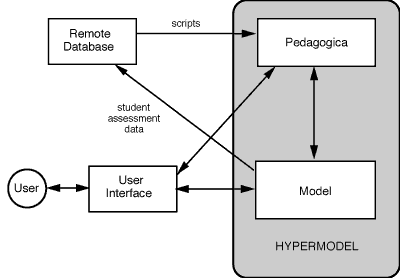Pedagogica: Difference between revisions
Jump to navigation
Jump to search
m (using an external editor) |
No edit summary |
||
| (One intermediate revision by one other user not shown) | |||
| Line 34: | Line 34: | ||
* http://www.concord.org/publications/newsletter/2001spring/cover.html | * http://www.concord.org/publications/newsletter/2001spring/cover.html | ||
[[Category: | [[Category: Microworlds]] | ||
[[Category: Simulation environments]] | |||
Latest revision as of 16:15, 4 August 2009
Definition
- Pedagogica a toolkit to build model-based or simulation-based learning systems
- Pedagogica “tames powerful software tools for practical, effective learning activities [...] Pedagogica is a software environment that converts tools and models into hypermodels. These are inquiry-based lessons that provide guidance to students as they use the software. Pedagogica tailors the appearance of the tools and the available options, presenting only those that are relevant to the activity. The interface is also used to assess student progress. It reports feedback, in real-time over the Internet, as students work through a series of activities.” [1]
- See also: Microworlds and simulation, as well as SAIL (a successor system)
- An example microworld shortly documented in this wiki is BioLogica, an other example is Molecular Workbench 2D (MW2D)
Architecture
- Features
- Embedded guidance and assessment.
With Pedagogica we can control many aspects of the learners' interactions with the software tools by changing the available options, the nature of the scaffolding (or guidance tools), the instructions, and the assessments. Pedagogica automatically reports student progress through these lessons via the client/server connection. This provides us with real-time, fine-grained, and educationally significant data on student learning. All this information is available both to the teachers and to the researchers. As we refine the Pedagogica-based activities, schools receive automatic updates of the software. (Pedagogica Home Page)
- Embbeding of different sorts of modeling software. Example are from physical science, chemistry, and biology.
- A combination of the two into hypermodels: These interactive activities challenge students to solve a problem and then monitor and react to their actions.
An example microworld shortly documented in this wiki is BioLogica.
The architecture is illustrated like this on the Pedagogica Home Page, retrieved 17:13, 18 August 2007 (MEST).
